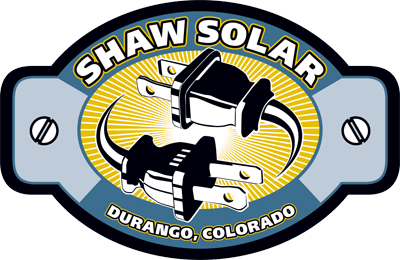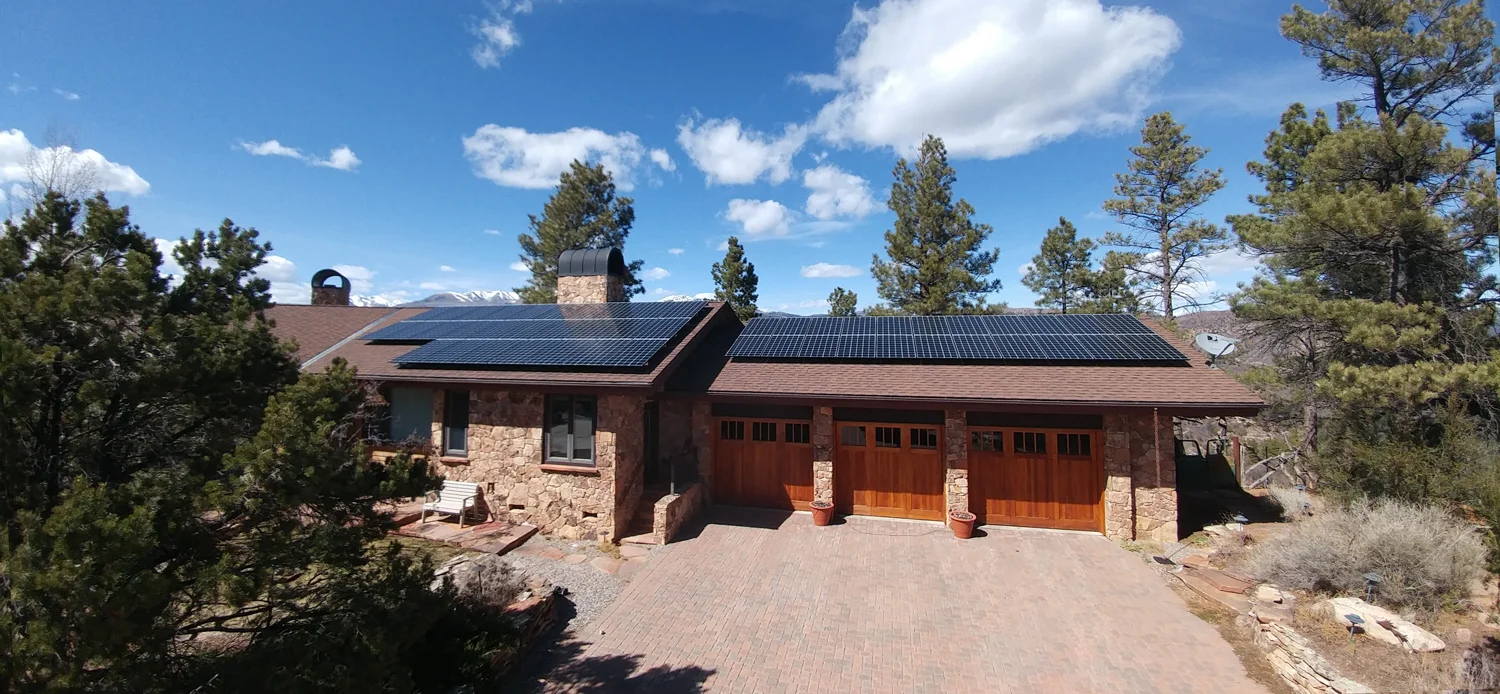If you don't see your question here or are interested in more information - give us a call (970-259-5606). We'd love to hear from you.
What size solar ARRAY do I need?
That depends on your energy consumption, which is why we’ll look at a recent electric bill when designing your array. For reference though, a 5 kW (5,000 Watt) system, which is roughly 15 solar modules, meets the needs of an average home and costs around $12,000 after rebates and incentives.
How much does solar cost?
It’s cheaper than you think! As mentioned above, an average home needs about 5 kW of solar (15 solar panels) which comes out to ~$12,000 net. We pride ourselves on staying current with the latest incentives and will make sure you know about them and have the necessary documentation to claim them.
How long will it take to reach payback?
Residential systems have a typical payback period of 7-8 years and commercial systems see 4-7 years. This means you save tens of thousands of dollars in energy savings over the next 25 years (the warranty length of the panels).
What are the current incentives and rebates?
The main incentive is the Federal government’s 30% solar Investment Tax Credit (ITC). This allows you to reduce your tax liability (taxes owed) by 30% of your solar project cost, and that amount can carry forward if you can’t claim it all in year 1. Note: This credit is set to drop after 2022 so don’t delay! Businesses are also eligible for accelerated depreciation which drops the net cost of the system even lower. At this time there are no state or local incentives that offer compelling financial assistance, but we are happy to discuss them with you as well.
Do I need a battery? How do they work?
The standard grid-tied solar setup does not include a battery. The systems are connected to the utility grid which accepts any excess power and credits your account. So the energy isn’t lost. That being said, folks looking to power their home with solar at night (rather than the grid) or have back up power in the event of an outage do choose to add a battery for on-site storage. As do folks looking to be completely off-grid. As the leading storage experts in our area, we’re happy to detail the best options for your needs and include that in your free proposal.
Is there any system maintenance required?
Not really, no. Solar is basically maintenance free. The only thing would be snow removal on the years where we see major back-to-back snowstorms and no sunshine. Otherwise our sunny skies usually melt the snow off the panels faster than the surrounding roof and you don’t have to worry about removing it.
How long will my solar system last?
Solar panels last a long, long time. The modules we install are industry-leading with a 25-year power warranty. Not bad considering the payback period on the system is roughly 8 years. For peace of mind, most systems have a free monitoring tool which allows you to track the health and performance of your system over time. In the end, we don’t know how long the panels will last, as the oldest terrestrial modules are over 45-years old and still going strong.
Can a homeowner sell power back to their utility?
Yes. Any excess electricity generated by the array will spin your meter backwards and credit your account by that exact amount of energy at the full price value. So that counts as “selling the energy back”. Then later, when you need that energy from the grid, you get it at no cost. It’s your power, you made it. The utility just hangs onto it for you. This process, known as net metering, happens all day everyday. If you have extra credits left over at the end of the year they’ll pay you for them - at the wholesale rate, not full price - and zero your credits out.
What happens when it snows?
Immediately after a snowstorm when your solar panels are covered, they won’t produce power. But because snow slides easily off solar panels and they are installed where there’s the most sun, the snow that covers your panels will melt first. This means your array will be exposed to light again relatively quickly, allowing them to produce electricity. The reflection off the white snow surrounding the panels may even increase how much power your system produces via the albedo effect. Here in Southwest Colorado, we engineer all our systems to support the snow loads expected in their given application.
Will solar increase my property value?
Yes. According to real estate appraisers, for every $1 of electricity you offset through solar you increase the value of your home by $20. This means that your home would increase in value by about the total net cost of the system after rebates. As an example, a 4 kW system will offset about $805 of electricity costs in a year based on LPEA’s rate in the City of Durango of $0.141/kWh. Using the “each $1 saved in electricity costs increases a homes value by $20” guideline, you could be looking at a home’s value increase of around $16,100. Studies also show that homes with solar panel systems have property values 3-4% above similar homes in the same area. They also sell twice as fast as the competition. In addition, this increase in value is exempt from property tax.


